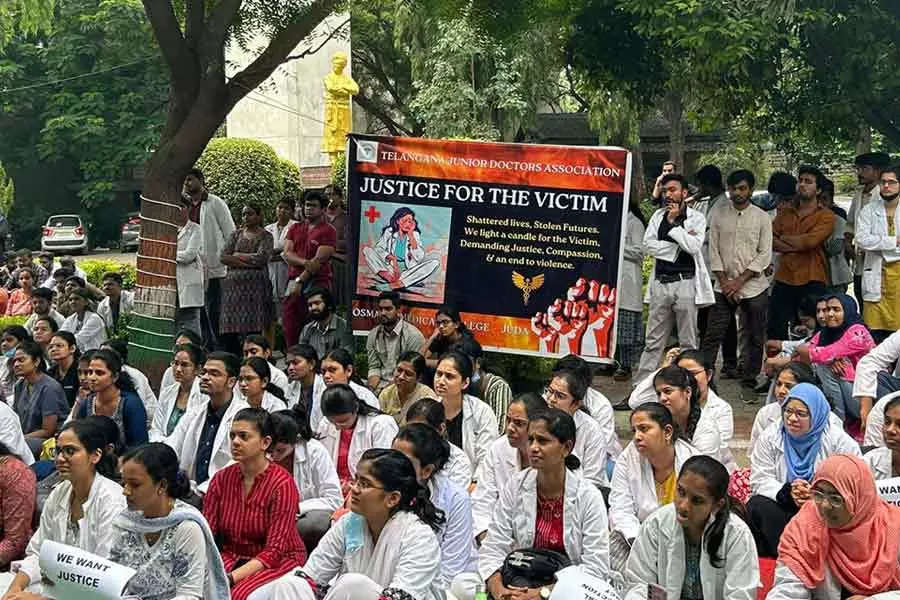Many newborn babies are dying because the antibiotics used to treat sepsis are losing their effectiveness, according to a global observational study which involved over 3,200 newborn babies suffering from the infection in 11 countries, including India.
The study, conducted from 2018 to 2020 and co-authored by a team of over 80 researchers, found there was high mortality among infants with culture-positive sepsis (almost 1 in 5 across the hospital sites), and a significant burden of antibiotic resistance.
The research, published on Friday in the journal PLOS Medicine, provides a wealth of high-quality data aimed at improving the treatment of newborn babies with sepsis.
“It was very important to undertake this study to get a better understanding of the kind of infections we are seeing in newborns in hospitals, the bugs causing them, the treatments that are being used and why we are seeing more deaths,” said Manica Balasegaram, Executive Director of Global Antibiotic Research and Development Partnership (GARDP).
“The study has given us vital information which will help us to better design clinical trials and ultimately improve the care and outcome of babies with neonatal sepsis,” Balasegaram said.
Sepsis is a life-threatening bloodstream infection which affects up to 3 million babies a year globally. Every year, 214,000 newborn babies, mostly in low- and middle-income countries (LMICs), die of sepsis that has become resistant to antibiotics.
Newborn babies are particularly at risk of severe infection because of their underdeveloped immune systems.
“One of the study’s most striking findings is the wide disparity in deaths from neonatal sepsis, depending on where people live,” said Nishad Plakkal, Additional Professor of Neonatology and Associate Dean (Research) at JIPMER, Puducherry.
“It’s not unusual in my unit for one nurse to take care of five or six very ill babies at one time. This makes it easier for infections to spread,” Plakkal said.
There was extensive variation in mortality between the 19 hospitals in the study, ranging from 1.6 per cent to 27.3 per cent, with markedly higher rates in LMICs, the researchers said.
“The study exposed the glaring reality of antibiotic-resistant infections, especially in hospitals in LMICs, where we are often faced with a shortage of nurses, beds and space,” said Sithembiso Velaphi, head of paediatrics at Chris Hani Baragwanath Academic Hospital in Johannesburg, South Africa.
“The risk of infections is very high and most infections are resistant to antibiotics. If an antibiotic doesn’t work, the baby often dies. This urgently needs to change. We need antibiotics that will cover all bacterial infections,” said Velaphi,
More than 200 different antibiotic combinations were used by hospitals in the study, with frequent switching of antibiotics due to high resistance to treatments.
Many physicians were forced to use antibiotics such as carbapenems due to the high degree of antibiotic resistance to the recommended treatments in their units. These are classified by the World Health Organization as “Watch” antibiotics.
They are recommended only for specific, limited indications as they need to be preserved. However, these were often the only antibiotics available to treat the infection.
Last-line antibiotics were prescribed to 15 per cent of babies with neonatal sepsis enrolled in the study.
Using the data collected, the team developed two tools that could be used in clinical trials and in any neonatal intensive care unit worldwide.
The NeoSep Severity Score, based on 10 clinical signs and symptoms, could be used by clinicians to identify newborns who have a high risk of dying, and ensure they get special attention more quickly, the researchers said.
The NeoSep Recovery Score uses many of the same clinical signs and symptoms and could provide clinicians with key information on whether to escalate treatment, they said.
“The observational study has been instrumental in providing the high-quality data that we need to design trials of appropriate treatments for sepsis in newborn babies. It has been a huge collaborative effort by researchers and clinicians in Africa, Asia, Latin America and Europe,” said Neal Russell, Principal Investigator for the neonatal sepsis study at St George’s, University of London (SGUL), UK.
The study also aims to inform WHO guidelines on treatment for newborn babies with sepsis.
The results of the study have been used to design a pivotal strategic public health clinical trial to find better treatments for newborn infections in the context of increasing resistance to existing treatments.
The trial will also look at appropriate formulations and dosages for newborn babies. It will be expanded to other countries and regions from 2024, with a target of recruiting up to 3,000 newborns overall.
This story has been published from a wire agency feed without modifications to the text. Only the headline has been changed.










